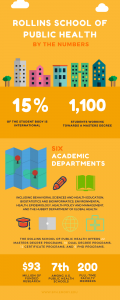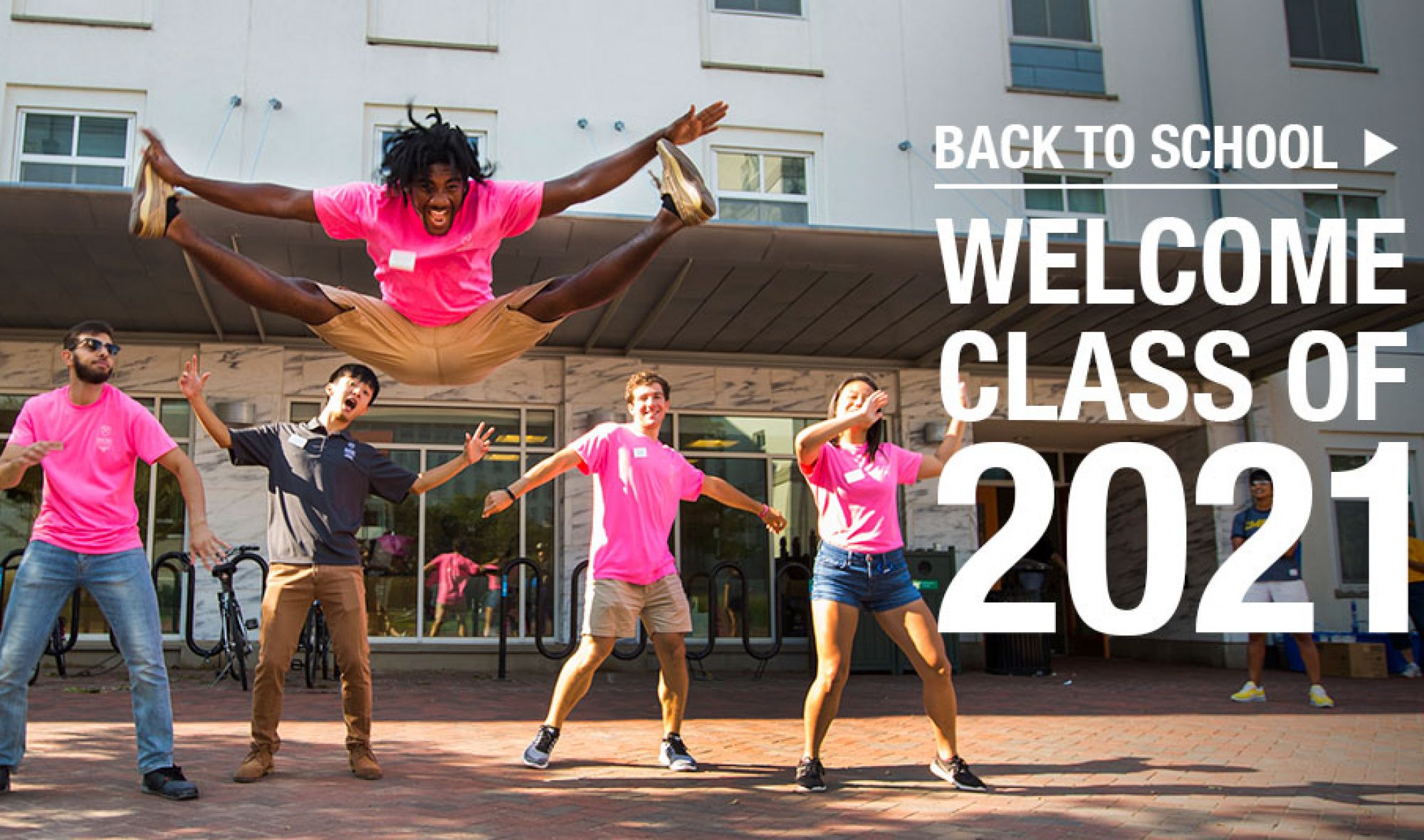rsphweb. (2014, December 23). The Rollins Experience [Video file]. Retrieved from https://www.youtube.com/watch?v=JpvX-iymomw

If you’re a student in search of a school that will launch you towards your dreams of working in public health, look no further. Emory’s Rollins School of Public Health, ranked seventh in the nation, consists of six departments, all of which study and work towards improving the world’s most prevailing public health issues: behavioral sciences and health education, biostatistics, environmental health, epidemiology, health policy and management, and global health. All departments are taught by doctoral level faculty who are also involved in research. Rollins collaborates with some of the world’s biggest health organizations and agencies such as the American Cancer Society and the Centers for Disease Control and Prevention (CDC). With Atlanta known as the “Public Health Capital of the World”, Emory’s Rollins school attracts students from all over the world.
Rollins encourages a tight-knit and inclusive community between the students, staff, and faculty. The school’s education is enforced through an engaging cultural aspect with respect to all types of diversity, and it doesn’t stop in the classroom. Rollins’s dedication to inclusion sticks as the school reaches out into all communities in effort to eliminate health discrepancies. As a core part of the curriculum, partnership with diverse communities in public health work remains an integral part of a Rollins education. Diversity is evident in the student body itself. Students come from 46 states and 40 countries, with an international student percentage of 15%. Over 70 languages are spoken at Rollins, and the school understands the importance of communication–building university resources with a diverse faculty and staff.
Kate and Michael interviewed Chris Moye, a first year student at Emory who is thinking about studying public health.
Coming from the Atlanta area describe the health disparities regarding different communities. What do you think the underlying issue is?
I think that the underlying issue in the disparities that are experienced by different communities in Atlanta is strictly a result of economics. People who have a lower socioeconomic status are not able to access to the same health care options as middle-class families, and this can be the difference between life and death.
The Robin’s school of Public health emphasizes an environment of inclusion. The school is extremely diverse. How has this impacted your decision when thinking to apply?
The diverse background of students at the Robin’s school is one of the most important things to me as a minority. Being educated with other minorities is important to me because it will help to approach the field of medicine from different perspectives. This will help me to become a better physician in the future, while also helping me to figure out how to solve complex healthcare problems in my own community and beyond.
Coming from Atlanta, Chris has seen poverty-stricken neighborhoods that simply cannot afford the same health care options as wealthier communities. Based on the mission of the Rollin’s School, it is clear that these students are striving to not only learn more about public health, but also give back to the community in different ways. The diversity of the school, as Chris mentioned, provides the healthcare community with multiple perspectives and backgrounds. Giving back to the community is an important aspect of life that often goes unnoticed. Much like the free-riding theory of economics, people often wait for others to give back instead of putting themselves out there and making an actual difference. Emory’s Rollins School seems to be that catalyst for action as its students are eager to create solutions to the multitude of problems in the healthcare industry.
If interested in the Rollins school of Public Health, one should start to explore the many steps to apply. Whether its collaboration with experienced CDC researchers, or having tight-knit relations with the Winship Cancer Institute, Rollins is the perfect fit for incoming students in the public health community.
Fall 2018 application:
- Due August 2, 2018.
- Average GPA for MPH/MSPH applicants is 3.5 or higher.
- Transcripts.
- Two evaluations from academic advisors or faculty.
- Written piece regarding experience in research.
- GRE test scores.
Four types of degrees may be earned at Rollins:
- Master of science in public health (MSPH)
- Dual and doctoral degrees
- Master of Public Health (MPH)
- and Executive MPH Program.
Apply to Rollins for endless opportunities to experience and learn about the world of public health!
Rollins even holds two-hour information sessions on campus from 10:30am – 12:30 pm.
https://www.youtube.com/watch?v=JpvX-iymomw
rsphweb. (2014, December 23). The Rollins Experience [Video file]. Retrieved from https://www.youtube.com/watch?v=JpvX-iymomw
